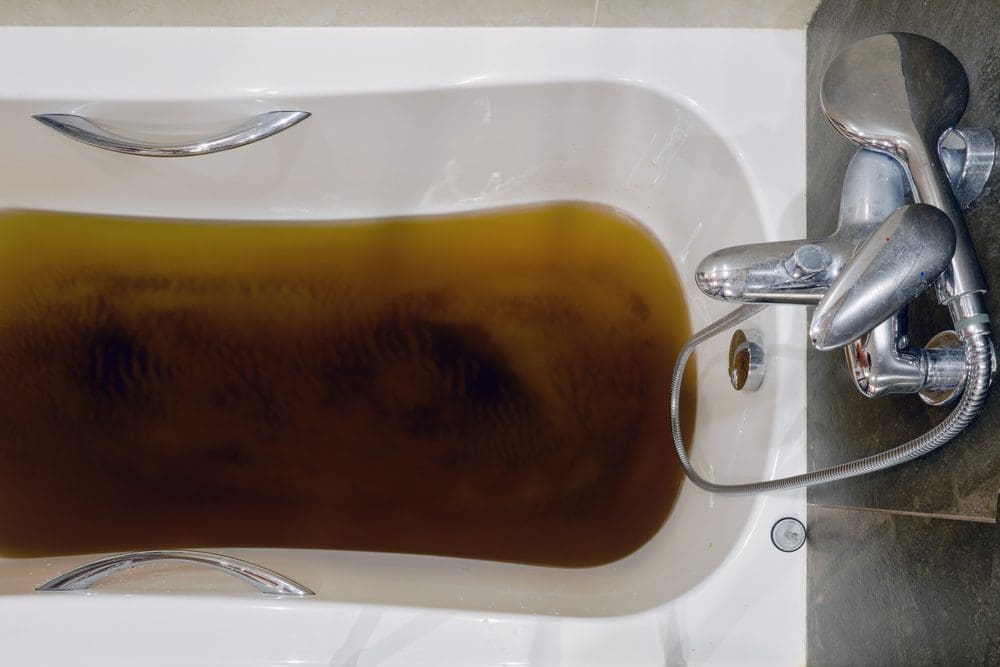Highly-Rated Reasons for Discharge Coming Up in the Bathtub
Highly-Rated Reasons for Discharge Coming Up in the Bathtub
Blog Article
The article further down pertaining to Why is There Sewage Coming Up Through the Bathtub is pretty much captivating. You should take a look.

Sewage back-up in the tub can be a distressing and unhygienic problem for any type of house owner. Not only is it bothersome, however it likewise positions significant health and wellness dangers and suggests underlying issues with the plumbing system. Recognizing why sewer is showing up via the bath tub is essential for taking appropriate activity to resolve the issue effectively.
Introduction to the Issue
Understanding the Issue
When sewer draws back up right into the bath tub, it's a clear indication of a trouble with the drain system. The wastewater that should be streaming away from your home is instead locating its back into your home, which can result in considerable damages and health hazards.
Prospective Causes
Numerous variables can add to sewage backup in the bathtub. From blockages in the sewage system line to problems with the plumbing facilities, recognizing the origin is necessary for discovering a service.
Usual Factors for Sewer Back-up
Clogs in the Sewer Line
One of the most common causes of sewage backup is an obstruction in the sewage system line. This can happen as a result of the build-up of debris, grease, or foreign things in the pipelines, preventing proper circulation and creating sewer to back up right into your bath tub.
Tree Origin Breach
Tree origins seeking moisture and nutrients can penetrate sewer lines via little cracks or joints. In time, these roots can grow and expand, causing significant damages to the pipes and bring about sewer back-up concerns.
Aging Framework
Older homes might have obsoleted plumbing systems that are much more susceptible to deterioration, cracks, and degeneration. As pipes age, they come to be much more prone to leaks and blockages, enhancing the likelihood of sewer backup incidents.
Heavy Rainfall or Flooding
During durations of heavy rainfall or flooding, the drain system may end up being overwhelmed with excess water, creating backups and overflows. This can cause sewage backing up right into tubs and other fixtures inside the home.
Health Risks Connected With Sewage Backup
Contamination of Water Supply
Sewer backup can infect the water system in your home, presenting a severe health threat to you and your family members. Exposure to contaminated water can bring about stomach issues, skin infections, and various other ailments.
Spread of Condition
Sewer includes damaging bacteria, viruses, and bloodsuckers that can create a variety of diseases, consisting of liver disease, cholera, and gastroenteritis. Entering into contact with sewer or contaminated surface areas places you at risk of infection.
Mold Development
Dampness from sewer back-up can create optimal conditions for mold and mildew development in your home. Mold spores can exacerbate respiratory problems and create allergies in sensitive individuals, making punctual cleanup crucial.
Signs of Sewage Back-up
Foul Odors
Undesirable smells rising from drains pipes or fixtures, especially in the shower room, might suggest sewage backup problems. These smells are commonly solid and persistent, signaling a problem that requires immediate interest.
Slow Draining Fixtures
Bathtubs, sinks, and bathrooms that drain pipes slowly or otherwise in all could be experiencing sewer backup. If several components are impacted all at once, it's likely that the concern originates from a typical factor, such as the primary sewer line.
Gurgling Sounds
Strange gurgling or gurgling noises coming from drains pipes when water is running somewhere else in the house are a measure of air caught in the plumbing system. This air build-up can arise from sewer backup and must be explored quickly.
Immediate Actions to Take
Shutting Off Water System
In the event of sewage backup, it's essential to switch off the water system to avoid further contamination and damages. Find the major water shutoff valve in your home and shut it off till the issue can be resolved.
Contacting a Specialist Plumber
Handling sewer backup is not a do it yourself task. Call an accredited plumber with experience in handling sewage-related issues to analyze the circumstance and perform required fixings or cleanups.
Avoiding Contact with Polluted Water
Until the sewage backup is fixed, prevent contact with contaminated water to avoid the spread of germs and microorganisms. Use safety gear if you must remain in the damaged area and clean your hands thoroughly later.
Preventive Measures
Regular Maintenance of Drain Lines
Set up normal inspections and maintenance of your drain lines to determine and attend to possible problems prior to they intensify right into significant problems. This can consist of cleaning debris, checking for tree root invasion, and repairing any kind of broken pipes.
Mounting Backwater Shutoffs
Think about installing backwater shutoffs in your plumbing system to prevent sewage from receding into your home during durations of heavy rainfall or flooding. These shutoffs immediately close when water starts backing up, shielding your home from contamination.
Proper Disposal of Family Waste
Stay clear of purging anything apart from toilet tissue and human waste down the commode to avoid blockages and blockages in the drain line. Dispose of oil, oil, and other family chemicals appropriately to minimize the danger of plumbing problems.
Tidying up After Sewage Backup
Sanitation Procedures
Completely decontaminate and sanitize impacted areas after sewage back-up to remove hazardous microorganisms and prevent mold and mildew development. Use ideal cleansing items and protective gear to make sure secure and reliable cleaning.
Restoration of Affected Areas
Repair any kind of damages to flooring, walls, or fixtures brought on by sewer backup. Depending on the degree of the damage, you might need to change carpets, drywall, or other materials to recover your home to its pre-loss problem.
Why is there sewage coming up from my bathtub?
These gas fumes, like hydrogen sulfide – the gas that leaves a rotten egg smell in its wake and is highly flammable and toxic – can be hazardous to your health. Sewage poses major health risks as it contains harmful bacteria and microorganisms that can be dangerous if exposed to them.
Sewage cleanup should be considered an emergency.
So, why is there sewage coming up from your bathroom? There are several common causes of a sewage backup.
The most common reason for sewage coming up through your bathroom is a clogged sewer line. All plumbing in your bathroom connects to a single drain pipe that leads to the sewer line under your house. This drain line carries all wastewater and sewage away from your home to the city’s sewer system.
When the sewer line becomes clogged or blocked, wastewater has nowhere to go but back toward your house. This results in sewage coming up through your drains, often starting with your tub or shower.
Another culprit may be the sewage ejector pump, which is used when a bathroom, laundry room or any other type of plumbing fixture is located below the level of the main sewer or septic line flowing from the house. Most commonly, ejector pumps are used in homes with basement bathrooms or laundry rooms.
When you experience sewage coming up through your bathtub, it’s always best to contact a professional. Attempts to fix a clogged sewer line without experience often lead to more plumbing damage.
Make sure that no one enters the affected area, and open as many windows as possible. Pre-treat the flooded area with small splashes of chlorine bleach. Wear protection gear like rubber gloves, a mask, and water-resistant coveralls.
https://www.shawlocal.com/the-herald-news/sponsored/2022/08/17/omega-plumbing-10199038/

As an avid reader about Why sewage is coming up through your bathtub, I was thinking sharing that section was really helpful. You should set aside a second to promote this blog if you enjoyed it. Thanks for your time invested reading it.
Rates
Report this page